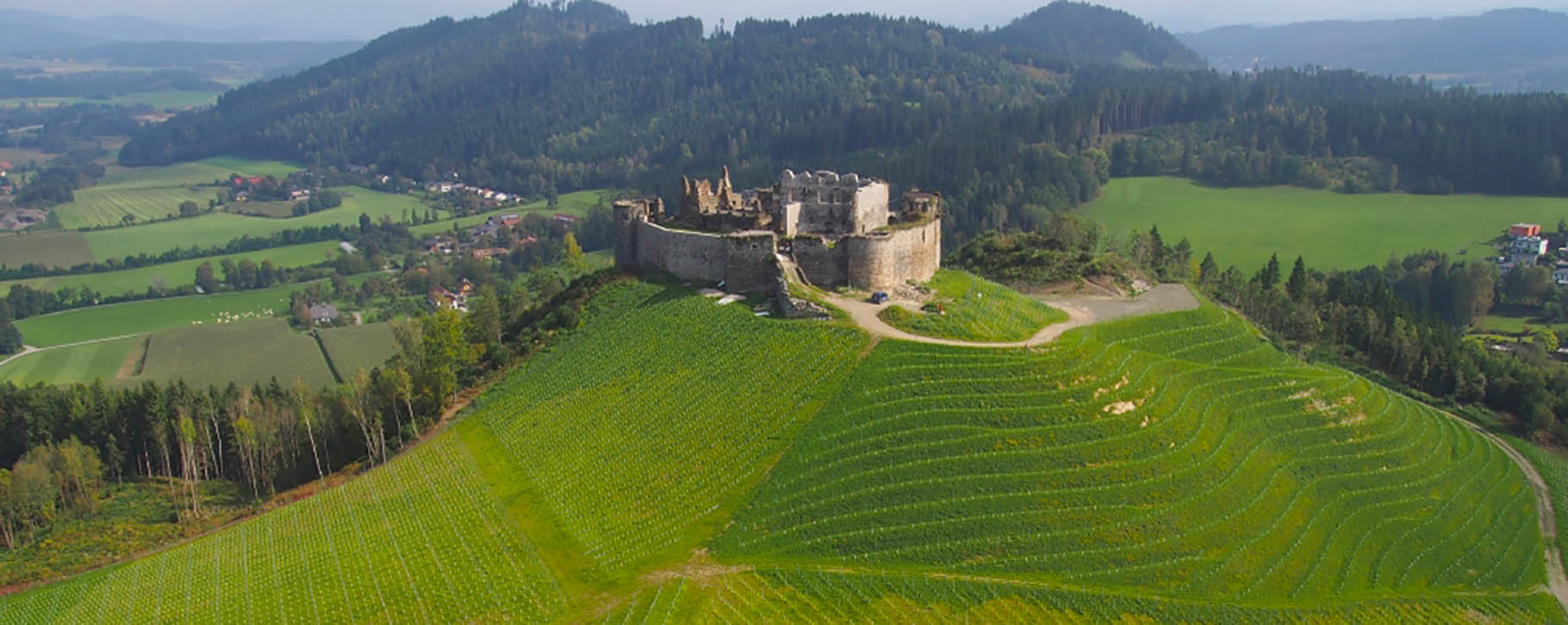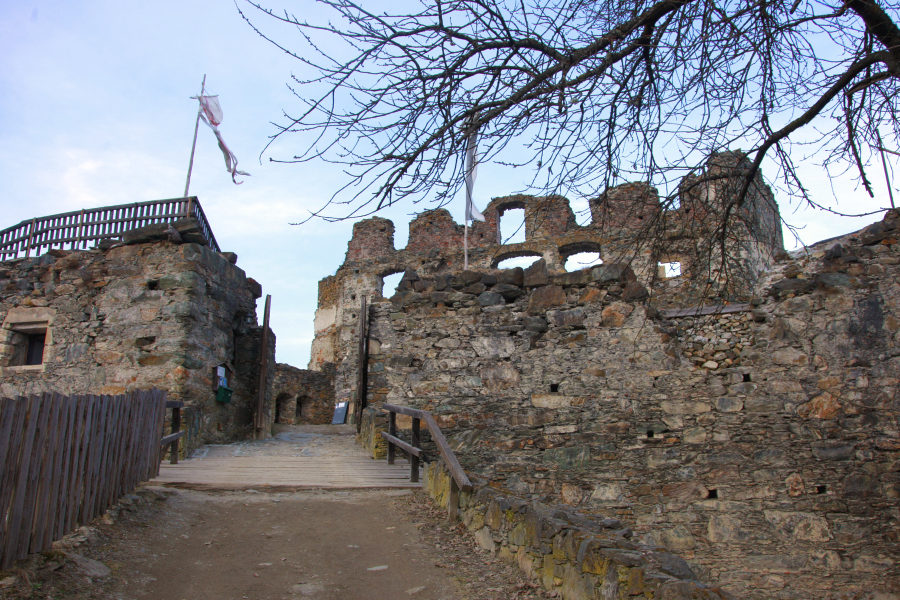Burgruine Taggenbrunn
The Taggenbrunn castle is situated on the municipality of Sankt Georgen aL in Sankt Veit an der Glan in Carinthia, Austria.
History
Through a donation of Louis the German 860 Salzburg came into the possession of the area. Taggenbrunn was built on the remains of a Celtic-Roman hillfort settlement ( 6th century BC ) in the first third of the 12th century by Tagenus of Pongau on behalf of the Archdiocese of Salzburg.
For the first time Taggenbrunn 1142 mentioned in ( Rahuinus de Takkenbrunnen ), expressly named as a castle ( Castrum Take Brunne ) in 1157. A feud between the Elect Philip of Spanheim and Bishop Ulrich of Seckau to the Archbishopric of Salzburg, in the also Duke Ulrich III. intervention of Carinthia favor of his brother Philip, the castle was destroyed in 1258 and rebuilt in 1268. In the uprising of Ulrich von Heunburg against Duke Albrecht I and Duke Meinhard von Kärnten 1292 the Duke of Carinthia son Ludwig was captured and briefly imprisoned by the archbishop of Salzburg Conrad IV in Taggenbrunn. 1308 was appointed Otto von Liechtenstein -Murau for Governor of Carinthia and Salzburg admitted this Taggenbrunn as a residence: Carinthia was ruled by Taggenbrunn from.
1479 opened Archbishop Leonhard von Keutschach the Hungarians, with whom he against Emperor Frederick III. was allied, Solid Taggenbrunn, which was subsequently destroyed by the imperial troops. Until 1494 Taggenbrunn remained in imperial possession. At this time was Frederick's son, Maximilian I., Taggenbrunn back to the archbishopric of Salzburg. The expansion of the castle was carried out from 1497 to 1503 to a modern fastening under Archbishop Leonhard von Keutschach, who was also responsible as the main client for the final development of the Hohensalzburg Fortress in its present size. At close range, a granary, the Pfleg and the Marhaus were further built which are still preserved in its original form. Specifically, the granary is structurally interesting, as he is well preserved as one of the last of this size in the near and far. The heavy roof slates rest still on the original roof.
Salzburg House, and officers were sitting on Taggenbrunn to 1692. 1796 Taggenbrunn was first bezwichnet as a ruin. As Salzburg ceased to exist as a sovereign principality by the Empire in 1803, Taggenbrunn fell to Austria and became the state domain. 1858 it was bought by Antonie Reyer Taggenbrunn, in 1883 went Taggenbrunn in the possession of the Paulitsch family and in the same year to the Kleinszig family. In 2011 bought the entrepreneur Alfred Riedl ( Jaques Lemans Watches ) Taggenbrunn.
Gastronomy
Since the mid- 1980s, is located in the widely available and well-preserved or restored part of the castle ruins with the associated courtyard largely uninterrupted a restaurant business. Among other things, medieval knights dinner will be held.









